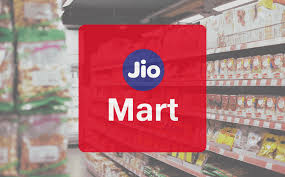Introduction
India’s e-commerce market has become a battleground for e-commerce giants seeking convenience. Amazon and Flipkart have dominated this space by offering everything from groceries to electronics across the country. Reliance Retail made it with JioMart, its bold online-to-offline commerce platform. With the might of Reliance Industries and deep integration with the Jio telecom ecosystem, JioMart was poised to transform the way Indians shop—particularly in Tier 2 and Tier 3 cities where brick-and-mortar stores remain ubiquitous.
Jio Mart is its model of working with local Kirana shops and tapping Reliance’s extensive offline retail chain to deliver online orders more effectively. This potent hybrid vehicle—blending technology innovation and old-fashioned retail—has prompted many who follow the space to wonder: is Jio Mart the Amazon slayer India has been holding out for? The query isn’t merely which company sells more—it’s which one knows Indian consumers better, delivers more quickly, provides greater value, and fits into life more perfectly. With Reliance’s deep pockets, political capital, and hyperlocal model, Jio Mart is not only a challenger anymore to set up as a game-changer in India’s digital retail battle.
The Rise of JioMart
JioMart debuted in the latter part of 2019 as a pilot in chosen cities but didn’t really expand until the first half of 2020 when India was trying to navigate the COVID-19 pandemic. Launched in May 2020 in 200+ cities, JioMart leveraged the country-wide demand for home delivery during lockdowns. Its initial focus on groceries and daily essentials resonated deeply with consumers struggling to access supplies through traditional means. Supported by Reliance Industries, India’s largest and most powerful conglomerate, Jio Mart enjoyed a distinct advantage from the very beginning.
The platform enjoyed Reliance Retail’s huge physical store network and the digital foundation of Jio’s telecom operations to build a differentiated, tech-driven retail model.
JioMart’s omnichannel approach—combining the offline might of Reliance Fresh, Smart, and partner outlets with a scalable digital platform—distinguished it from conventional e-commerce players.

JioMart vs Amazon
Amazon follows a marketplace model involving many sellers, which can result in price fluctuation for the same product at times. However, Amazon provides good discounts, particularly during festive seasons, and Jio Mart’s direct sourcing and selling of most products give it the advantage of consistently low pricing. Reliance Retail’s massive offline footprint, along with Jio’s digital platform, provides JioMart with a distinct logistics edge. The firm brings local Kirana stores within its fold as it integrates them as fulfilment centres, allowing for speedy and hyperlocal delivery services.
The model offers fresher products and quicker delivery time, especially for perishables and grocery products. Amazon has a very sophisticated logistics network, trucks, warehouses, and computer-based inventory control. Amazon Transportation Services, plus third-party couriers and partnerships, allow for country-wide and even same-day delivery in metropolitan areas. However, Amazon’s model is central versus Jio Mart’s hyperlocal model.
Technology and User Experience
Amazon’s user interface is mature and complete with features, including personalized suggestions, simple search filters, multiple payment options, and an effective customer support system. The platform also includes voice shopping, Alexa integration, and a variety of user comforts, such as Amazon Prime benefits. Jio Mart is quickly transforming its technology stack. It provides end-to-end integration with the MyJio app, allowing Jio customers to shop without requiring multiple downloads or logins. Jio Mart has also tested out WhatsApp ordering, where customers can order through messaging apps’ features that speak to less technologically inclined users and those in smaller towns. This mix of digital convenience and availability at the local store creates a hybrid experience suitable for India’s varied user base.
The Power of the Kirana Network
JioMart’s tie-up with India’s large Kirana (small neighbourhood) retailer network is the foundation of its plans to shake up the e-commerce industry. Contrary to conventional online marketplaces that are based on big centralized warehouses and intercity deliveries, Jio Mart wants to give millions of local kiranas a fillip by plugging them into its digital platform. This strategy not only digitizes these small businesses by equipping them with technology and inventory management but also builds a strong hyperlocal supply chain that helps buyers and sellers alike.
By connecting Kirana stores digitally, JioMart allows these local retailers to take online orders, operate inventory effectively, and distribute goods rapidly in their neighbourhoods. For consumers, this translates into quicker delivery, fresher products, and a safe shopping experience supported by well-known neighbourhood stores.
This hyperlocal strategy provides JioMart with a massive advantage over Amazon, which relies almost entirely on giant centralized warehouses and third-party logistics. Although Amazon’s logistics network is vast and technology-enabled, replicating the deep grassroots-level reach provided by Kiranas is a complicated task. Jio Mart’s capability to utilize these local stores as micro-warehouses enables it to achieve faster delivery, lower costs, and provide customized services that appeal powerfully to Indian consumers, particularly in the smaller towns and countryside. The Kirana network power is less about logistics and more about blending traditional with digital to build an ecosystem Amazon is unable to mimic, making JioMart a distinctively Indian e-commerce solution.
Strategic Advantages of JioMart
Jio Mart stands in an enviable position because it benefits from the expansive and connected Reliance ecosystem, where telecom, retail, finance, and logistics capabilities are intertwined. Simply put, JioMart is fueled by Jio’s digital networks, which link millions of customers with end-to-end connectivity and easy online transactions. The intimate integration of all of these existence and capabilities affords them significant cost efficiencies. Reliance is able to negotiate even lower prices from suppliers and manufacturers for lower procurement costs.
JioMart’s strategy is to focus on penetrating Tier 2 and Tier 3 cities and rural geography, markets where most of its competitors, Amazon included, face penetration barriers or supply and logistics challenges. Reliance’s foundational presence in physical retail for these geographies provides it with a unique benefit: it can source, capitalize on, and serve these under-served markets at lower costs. JioMart’s customer base while creating digital inclusion for millions who previously were reliant on local kiranas and traditional marketplaces. Jio Mart is in a position to disrupt conventional players with technology, scale, and regional connectivity adapted to India’s diversified retail ecosystem.
Challenges Facing JioMart
While having rapidly grown and strategically strong, Jio Mart also has its fair share of challenges to conquer on the way to becoming a retail e-commerce giant in India. Its most significant challenge is logistics scalability and consistency. While Jio Mart’s use of the Kirana stores-based hyperlocal model offers proximity and speed, scaling it over India’s dispersed and expansive geography is difficult. It may be challenging to ensure on-time deliveries, inventory management over many small stores, and quality control with increasing volumes of orders and spreading into more areas.
The other critical threat is competing with Amazon Prime’s well-functioning loyalty programs and superior customer service. Jio Mart has not yet established a similar loyalty ecosystem that can attract and retain a significant number of repeat customers in urban and semi-urban locations where consumers have high expectations.
JioMart leverages Reliance’s brand credibility, digital consumers are still assessing the platform’s reliability, product quality, and after-sales support. Any inconsistency in order fulfilment, returns policy, or customer care may affect user confidence. In order to retain first-time buyers as regulars, Jio Mart needs to keep refining its service experience and effectively address these issues of trust. JioMart has quickly emerged as a serious competitor in India’s e-commerce market, with low prices and a special hyperlocal Kirana network. Its advantages are penetration deep into Tier 2, Tier 3, and rural markets, cost savings through domestic sourcing, and effortless integration into Jio’s digital platform.
Conclusion
JioMart has quickly established credibility as a formidable competitor in the Indian e-commerce landscape. This is due to Reliance’s vast ecosystem reach, low prices, and unique hyperlocal Kirana network. JioMart’s strengths are its penetration into Tier 2, Tier 3, and rural markets, generics through domestic procurement, and ease of integration onto Jio’s digital platform.
Jio Mart will not dethrone Amazon but will disrupt relevant categories and provide an alternative competitive balance. The future of Indian e-commerce may not involve a single victor but cohabitation, where Jio Mart and Amazon operate in adjacent, albeit overlapping markets—forcing both to innovate and improve customers’ experiences. In the long run, this new reality may prove beneficial to consumers with expanded options, enhanced prices, and faster delivery times.
FAQs
Q. What is Jio Mart?
Jio Mart is a new e-commerce platform in India launched by Reliance Retail that deals mainly with groceries, essentials, and household items by merging local Kirana stores with an online marketplace.
Q. How is JioMart unique compared to Amazon?
In contrast to Amazon’s warehouse-based model, Jio Mart employs a hyperlocal strategy. It befriends neighbourhood Kirana stores to offer quicker delivery and localized stock.
Q. Are groceries and essentials available to order at Jio Mart?
Yes, Jio Mart focuses on groceries, fresh fruits and vegetables, dairy items, and daily needs with competitive pricing and fast delivery.
Q. Is Jio Mart nationwide?
Jio Mart is present in more than 200 cities in India and is expanding, primarily focusing on Tier 2, Tier 3, and rural areas.
Q. Does Jio Mart deliver through apps such as WhatsApp?
Yes, Jio Mart has tested WhatsApp ordering to enable online shopping.
Q How competitive is Jio Mart’s pricing with Amazon?
Jio Mart tends to price basics lower because of Reliance’s scale and direct procurement, while Amazon’s prices fluctuate due to its marketplace platform.
Q. What are Jio Mart’s most significant challenges?
Some of the primary challenges are efficiently scaling logistics, competing with Amazon Prime membership programs, and establishing consistent customer trust.
Q. Is Jio Mart linked to the MyJio app?
Yes, Jio Mart is connected to the My Jio app so that Jio customers can shop easily without independent registrations.
Q. What is Amazon doing in response to Jio Mart’s expansion?
Amazon is extending its fast commerce capabilities and developing services such as 15-minute grocery deliveries to maintain competitiveness.
Q. Will Jio Mart displace Amazon in India?
Jio Mart is expanding rapidly and taking its share of major market segments; Amazon is still well ahead. Both are likely to coexist, catering to different consumer segments and geographies.







